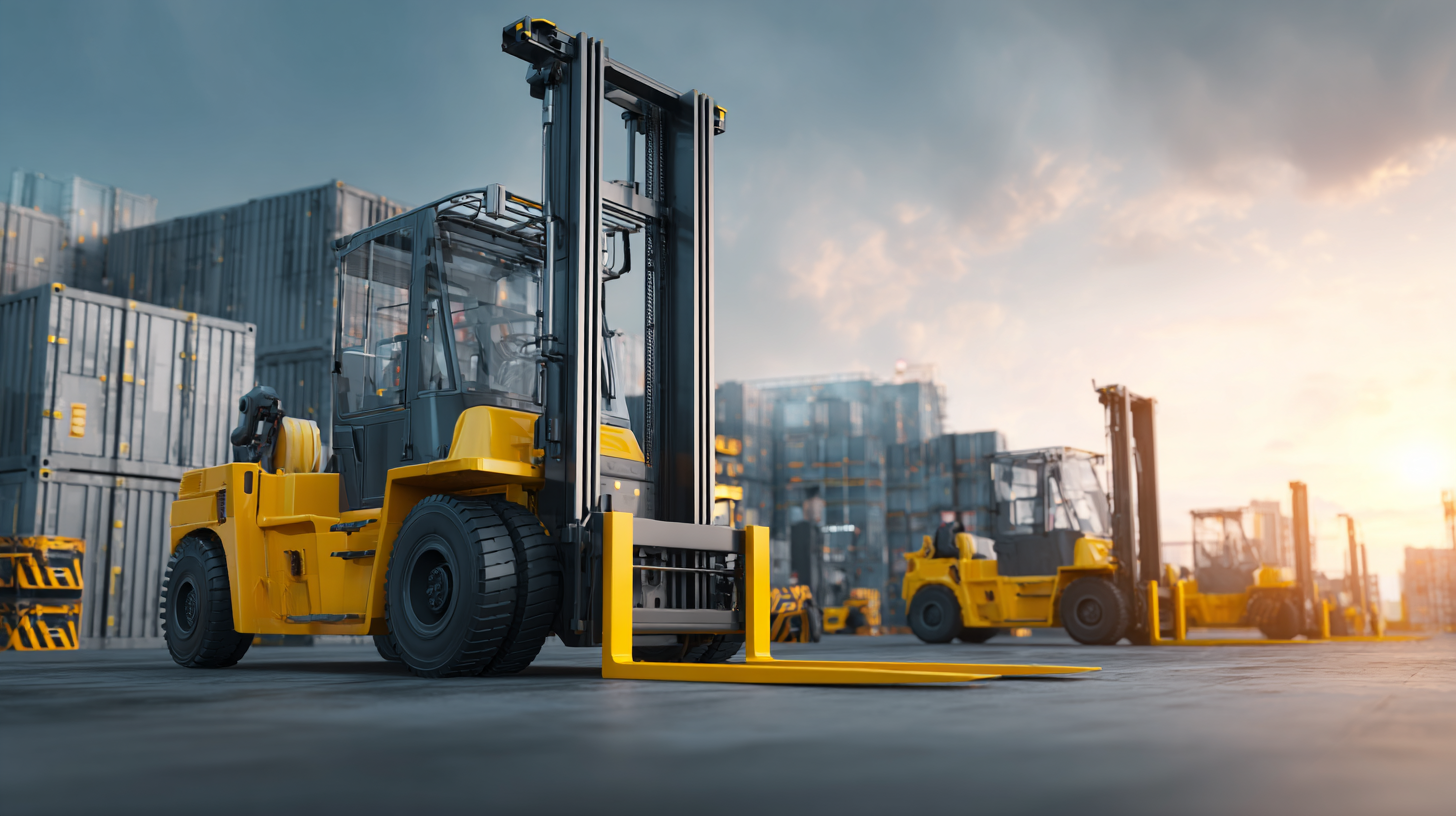The Complete Ultimate Guide to Choosing the Best Material Handling Equipment for Global Buyers
When it comes to optimizing logistics and supply chain management, selecting the right material handling equipment is crucial for global buyers. The complexities of international trade demand not only efficient machinery but also reliable after-sales service and manageable maintenance costs. In this comprehensive guide, we will delve into the significant advantages of robust after-sales support and how they can substantially reduce long-term operational expenses. By examining various examples across different industries, we will illustrate the impact of these factors on the selection process for material handling equipment. This guide aims to equip buyers with the knowledge needed to make informed decisions that will enhance productivity and ensure seamless operations in their supply chains.

Understanding the Importance of Material Handling Equipment in Global Markets
Material handling equipment plays a critical role in enhancing the efficiency and safety of operations in global markets. As businesses expand their reach internationally, the need for reliable equipment becomes paramount. The right material handling solutions can streamline workflows, reduce labor costs, and prevent injuries, ultimately contributing to a more productive environment. Understanding the unique demands of various markets is essential for selecting the appropriate equipment that fits specific needs.
Tip 1: Assess Your Needs – Before investing in material handling equipment, conduct a thorough assessment of your operational requirements. Consider factors such as load sizes, handling frequency, the layout of your workspace, and any specific regulatory standards in your target market.
Tip 2: Research Local Regulations – Different countries have distinct regulations regarding safety and operational standards. Familiarize yourself with these requirements to ensure compliance and avoid potential legal issues. This research will also guide you in choosing equipment that meets regional standards.
By recognizing the importance of material handling equipment and adapting strategies to accommodate global market needs, businesses can enhance their operational efficiency while maintaining safety and compliance in diverse environments.
Key Factors to Consider When Selecting Material Handling Equipment
When selecting material handling equipment (MHE), global buyers must consider several key factors to ensure efficiency and safety in their operations. According to a report by the Material Handling Industry of America (MHIA), the right equipment can increase productivity by up to 25% and significantly reduce workplace injuries. Buyers should evaluate factors such as load capacity, equipment durability, and the specific handling needs of their products.
Tip: Always assess the load capacity requirements. Understanding the weight and dimensions of the materials being handled will guide your choice between forklifts, pallet jacks, or automated guided vehicles. Ensuring the selected equipment meets or exceeds these specifications is critical for optimal performance and safety.
Additionally, consider the equipment's adaptability to your facility's layout. Data from the Warehouse Education and Research Council (WERC) indicates that inefficient layout design can lead to a 20% increase in handling times. Therefore, opt for MHE that can easily navigate tight spaces or complex environments. Implementing modular, flexible systems can enhance operational productivity while accommodating future growth.
Tip: Evaluate the total cost of ownership (TCO), which includes initial purchase price, maintenance, and operational costs. A higher upfront investment in quality machinery could lead to lower long-term costs and improved ROI.
The Complete Ultimate Guide to Choosing the Best Material Handling Equipment
Comparing Different Types of Material Handling Equipment for Diverse Needs
When it comes to selecting material handling equipment, understanding the diverse needs of your operations is critical. Different industries require different types of equipment based on factors such as load type, environment, and efficiency. For instance, warehouses may benefit from automated guided vehicles (AGVs) that offer flexibility and reduced labor costs, while manufacturing sectors might need robust forklifts designed for heavy loads and rugged conditions. Each equipment type, from pallet jacks to conveyor systems, comes with its specifications and applications that cater uniquely to distinct operational requirements.
Moreover, the evolving material handling market is influenced by broader macroeconomic trends, including globalization and technological advancements. Buyers must consider these trends when choosing equipment, ensuring that their investments align with industry directions such as automation and sustainability. As companies seek to enhance productivity and minimize operational costs, evaluating the right mix of materials handling solutions will become instrumental in achieving success. With a clear understanding of the available equipment options and their suitability for specific tasks, global buyers can make informed decisions to optimize their operations.

Quality Assurance: How to Ensure Your Equipment Meets Global Standards
When selecting material handling equipment, quality assurance is paramount to ensure that your investment meets international standards. Companies should prioritize the certification of their equipment by recognized organizations, such as ISO or CE. These certifications not only validate compliance with safety and performance benchmarks but also enhance the credibility of suppliers in the global market. Buyers must seek out equipment that has gone through rigorous testing, which demonstrates its ability to function reliably under varying conditions.
Moreover, forging strong relationships with suppliers who emphasize quality is crucial. This can involve direct communication to understand their manufacturing processes, quality control measures, and after-sales support. It’s beneficial for buyers to request detailed documentation regarding material specifications and proof of compliance with global standards. By doing so, purchasers can mitigate risks associated with equipment failure and ensure that their operations run smoothly, contributing to overall productivity and profitability. Ultimately, the focus on quality assurance helps create a robust foundation for operational success across borders.
Strategies for Sourcing Material Handling Equipment from China for International Buyers
When sourcing material handling equipment from China, international buyers must adopt a strategic approach to ensure they select the best suppliers and products. Firstly, conducting thorough market research is crucial. Understanding the local manufacturers, their capabilities, and the types of equipment available will provide a solid foundation for informed decision-making. Using platforms like Alibaba, Made-in-China, and global trade shows can help buyers identify reliable suppliers and compare product offerings, which is essential for making well-informed purchases.
Additionally, establishing clear communication with potential suppliers cannot be overlooked. Buyers should ask detailed questions regarding product specifications, lead times, and quality assurance processes. Requesting samples and factory audits can provide insights into the manufacturer's operational standards, helping to mitigate risks associated with overseas purchasing. Finally, leveraging local contacts or hiring sourcing agents can greatly enhance the efficiency of the procurement process, ensuring that international buyers navigate the complexities of the Chinese market successfully.

